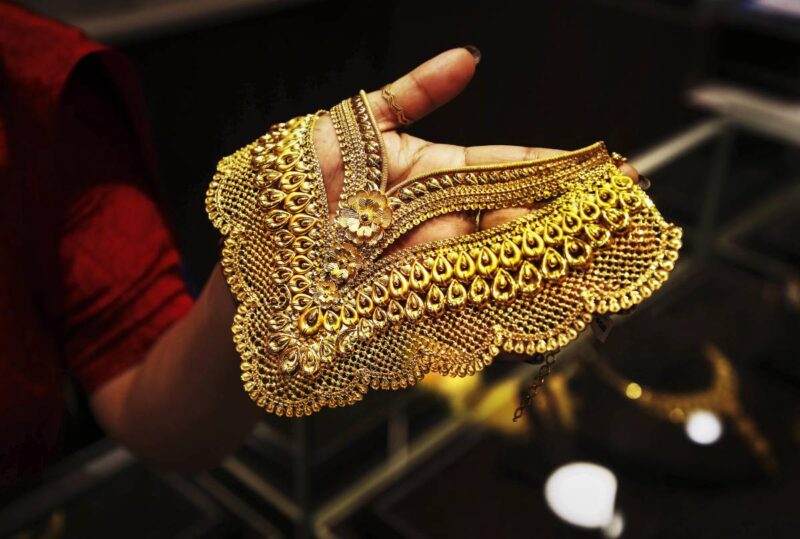India has become the world’s largest consumer of gold jewellery, surpassing China with total consumption of 563.4 tonnes in 2024. In comparison, China recorded 511.4 tonnes during the same period.
According to the World Gold Council (WGC), India’s total gold demand, including both jewellery and investment purchases, rose by 5% year-on-year to 802.8 tonnes in 2024, up from 761 tonnes in 2023. The WGC projects that gold consumption in India for 2025 will range between 700 and 800 tonnes.
Gold Demand and Price Trends
The total value of gold demand in India increased by 31% in 2024, reaching ₹5,15,390 crore, compared to ₹3,92,000 crore in 2023. This rise was driven by a combination of consumer purchases, particularly for weddings, and growing investment interest.
Gold prices rose by ₹6,410 per 10 grams (8.07%) over the year, reaching ₹85,800. While prices fluctuated, demand remained steady, driven by gold’s cultural and financial role in India.
Impact of Gold Duty Cut on Jewellery Demand
Gold jewellery demand declined slightly by 2% in 2024, down from 575.8 tonnes in 2023, despite record-high gold prices. However, the decline may have been larger without the impact of a gold import duty cut introduced in July.
Sachin Jain, Regional CEO of WGC India, stated that the duty reduction helped offset rising prices, leading to increased jewellery purchases in the latter half of the year. He also noted that India’s relatively strong economic growth compared to other markets contributed to steady demand.
Increase in Gold Investment Demand
Gold investment demand rose by 29% in 2024 to 239.4 tonnes, the highest level since 2013. This was an increase from 185.2 tonnes in 2023, indicating continued investor interest in gold as a store of value.
Following the July duty cut, gold prices initially fell, prompting increased investor activity, particularly in November when prices adjusted. Jain noted that investors continued to view gold as a store of value.
Gold Imports and Recycling Trends
India’s gold imports declined by 4% in 2024, falling to 712.1 tonnes from 744 tonnes in 2023. Meanwhile, gold recycling also saw a slight decline of 2%, with 114.3 tonnes of recycled gold compared to 117.1 tonnes the previous year.
The Reserve Bank of India (RBI) was a major gold purchaser in 2024, acquiring 73 tonnes, up from 16 tonnes in 2023. Central banks worldwide have been increasing gold reserves, reflecting ongoing global economic uncertainties.
Industry Implications
India’s position as the largest gold jewellery consumer and a key investment market has implications for jewellers. Despite high prices, demand for wedding-related gold purchases continues. Jewellers may see fluctuations based on price stability and economic conditions.
The increase in gold investment demand suggests changing consumer preferences, including greater interest in gold-backed financial products such as ETFs and digital gold. Jewellers involved in investment gold may see growing demand in this area.
Looking ahead, the WGC forecasts stable demand in 2025, with wedding seasons and broader economic conditions playing a key role in shaping consumer behaviour.






